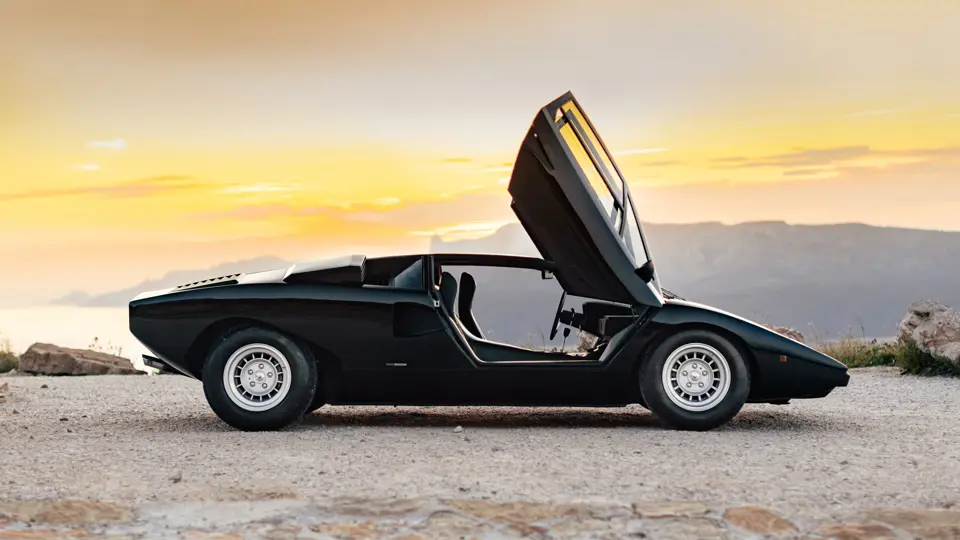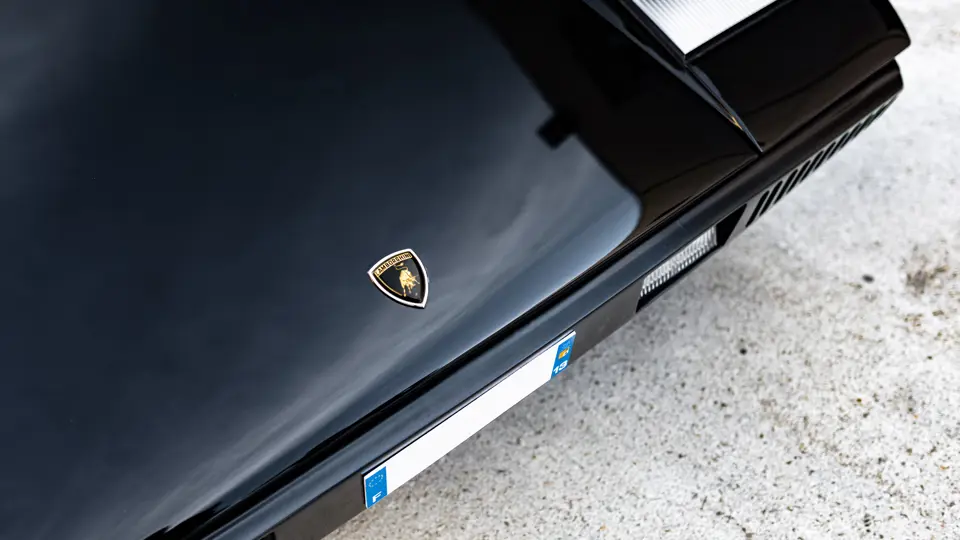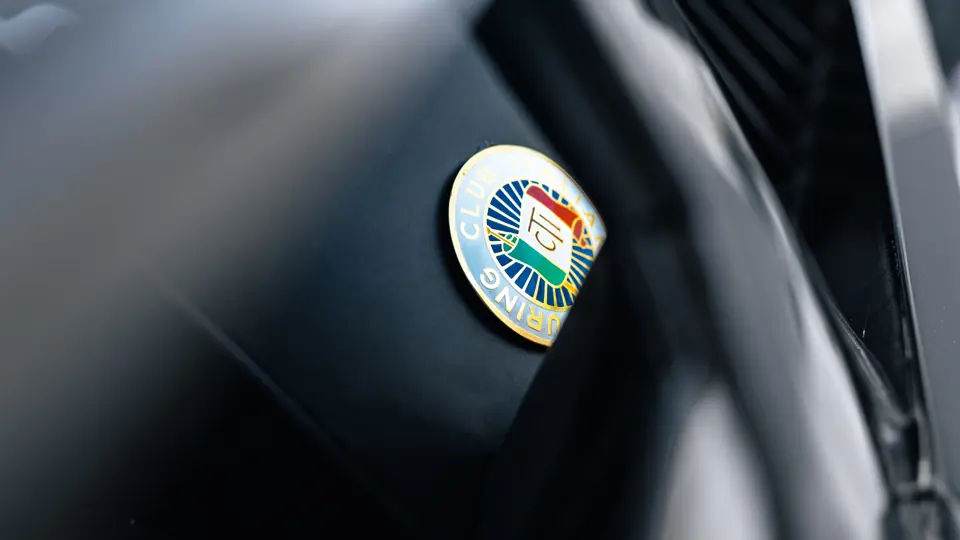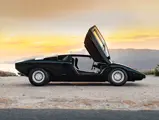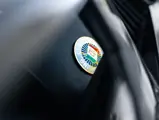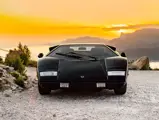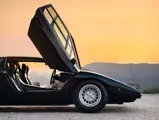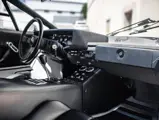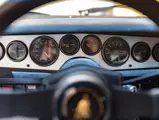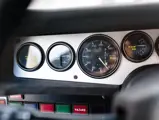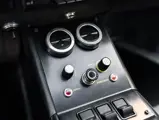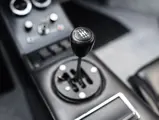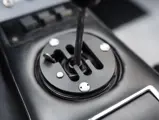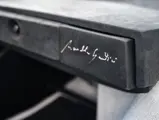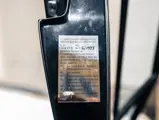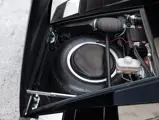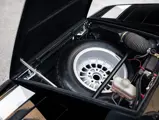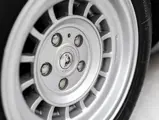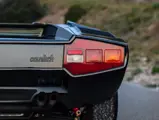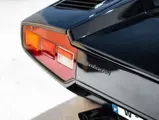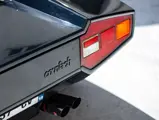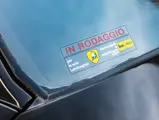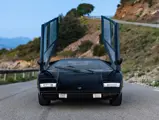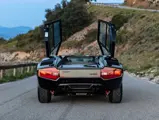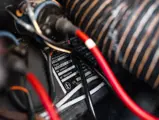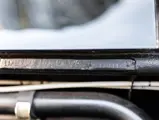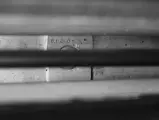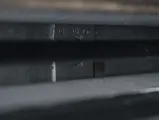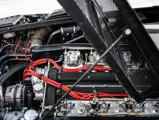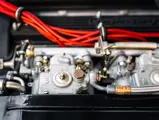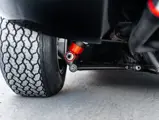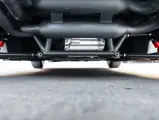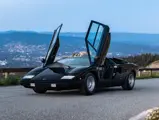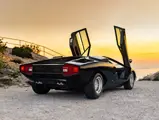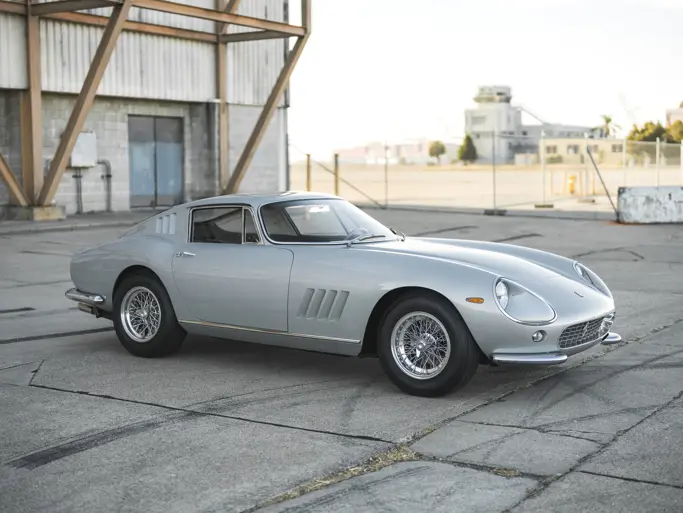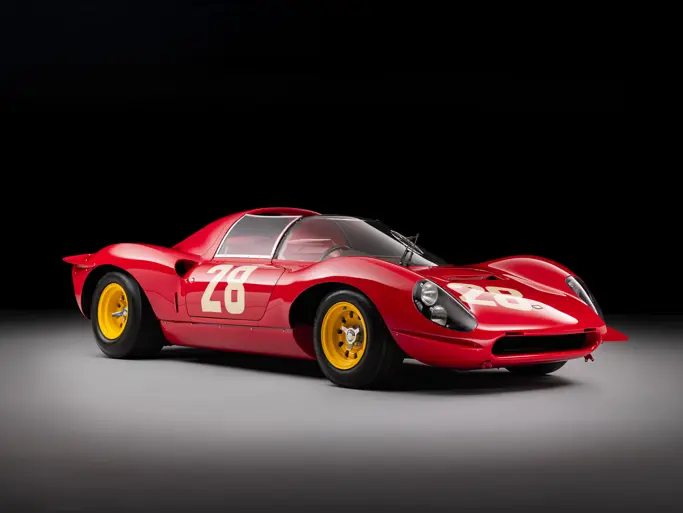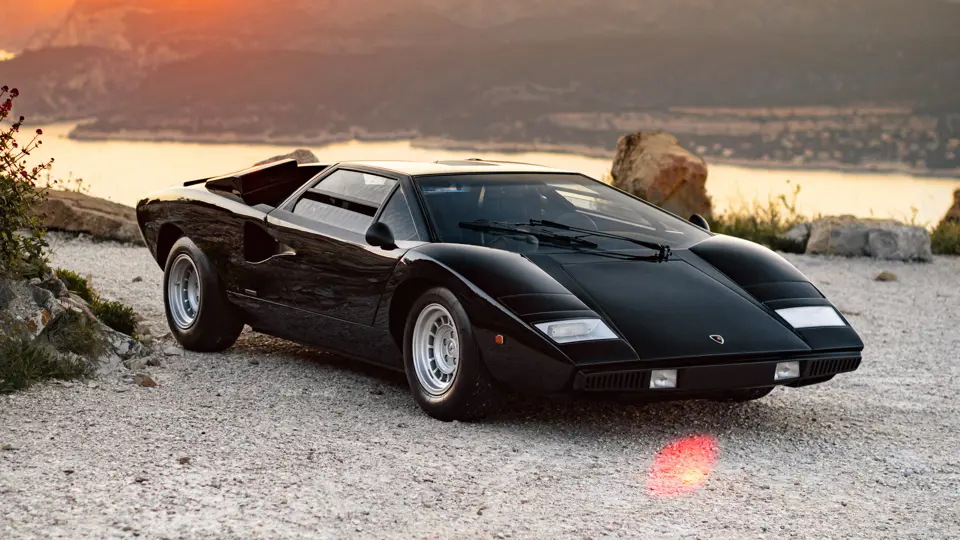
1975 Lamborghini Countach LP400 'Periscopio' by Bertone
{{lr.item.text}}
€905,000 EUR | Sold
{{bidding.lot.reserveStatusFormatted}}
- One of only 157 desirable LP400 ‘Periscopio’ examples made
- Finished in black over a black leather interior
- Desirable early example with adjustable suspension and lightweight mechanical components
- Subject to $60,000 of recommissioning work carried out between 2006 to 2007
- L'une des 157 attirantes LP400 ‘Periscopio’ produites
- Noire avec intérieur en cuir noir
- Séduisant exemplaire parmi les premiers, avec suspension réglable et composants mécaniques allégés
- A bénéficié en 2006-2007 d'une remise en état pour 60 000 dollars
When the Lamborghini Countach was first revealed as the marque’s flagship, replacing the iconic Miura, the supercar’s bold design drew widespread acclaim. On the first showing of the LP500 prototype at the Geneva Motor Show in 1971, it immediately set itself apart from its predecessor with its wedge shape and angular edges; such proportions had seldom been seen before. But the bold design of the Countach presented problems, as the car’s unique shape restricted visibility. As a result, Lamborghini devised a solution: a novel “periscope” mirror system.
Known as ‘Periscopio’ examples, the first 157 Countach LP400 production cars are, like the concept, defined by the lowered section of the roof that neatly flows into a small sight window to give drivers extra rearward visibility. These cars actually use a more conventional rearview mirror rather than a true periscope, but the distinctive name stuck. The early Countach models retained this feature until the LP400 S was introduced in 1978, with Lamborghini dropping the setup in favour of a completely flat roof. The first LP400, and the LP400 S that would follow, shared the same engine: a 4.0-litre V-12 fed by six Weber carburettors.
This example, finished in black over black leather interior, is understood to have been the 55th Countach made by Lamborghini. It was originally finished in red over black and later repainted to its present dramatic combination. Delivered new to a customer in Milan, the car was sold to its next owner in Bologna in 1977. It was exported to the United States that same year, where it was received by Auto Palace of Pittsburgh, Pennsylvania. Walker Inman Jr. would own the car for 12 years; its next three owners were all based in California.
During its time in the U.S., the dashboard of the Countach was autographed by Marcello Gandini, one of the designers of the car, at the California Concours in 2003. Paperwork indicates that over 2006 and 2007, the Lamborghini underwent around $60,000 of recommissioning work at Bobileff Motorcar Company in California, who rebuilt the engine and tidied up parts of the exterior and interior requiring attention. The car returned to Europe when it was bought by its next owner in Germany in 2007.
The Countach was unquestionably one of the defining supercars of the 20th century, and early LP400 ‘Periscopio’ examples such as this are particularly appreciated for hewing the closest to Lamborghini’s bold original vision. The sale includes a Lamborghini Countach manual, licence plates from a previous Italian registration, a spare wheel, and tool kit.
Lorsque la Lamborghini Countach fut présentée pour remplacer l'iconique Miura comme vaisseau amiral de la marque, le style musclé de cette supercar lui valut des acclamations unanimes. Lors de la première présentation du prototype LP500 au Salon de Genève 1971, celui-ci se démarqua immédiatement de sa devancière par sa forme en coin et ses arêtes marquées ; on avait rarement vu de telles proportions. Mais le style affirmé de la Countach posait des problèmes, car la forme extraordinaire de la voiture restreignait sa visibilité. Lamborghini trouva la solution : un système innovant de rétroviseur "périscope".
Les 157 premières Countach LP400 de série, connues sous le nom de Périscope, sont comme le concept-car caractérisées par un abaissement du pavillon qui se raccorde élégamment avec une petite vitre offrant au conducteur un surcroît de visibilité arrière. Ces voitures recourent en fait à un rétroviseur plus conventionnel qu'un véritable périscope, mais le nom est resté. Les premières Countach ont été ainsi équipées, jusqu'à l'arrivée en 1978 de la LP400 S pour laquelle Lamborghini a abandonné cet artifice au profit d'un pavillon complètement plat. Les premières LP400 et les LP400 S qui suivirent partageaient le même moteur, un V12 de 4,0 litres alimenté par six carburateurs Weber.
L'exemplaire proposé, noir avec intérieur en cuir noir, est considéré comme la 55ème Countach produite par Lamborghini. Elle était à l'origine rouge avec intérieur noir, mais elle a été par la suite repeinte dans cette spectaculaire harmonie de teintes. Livrée neuve à un client de Milan, cette voiture fut vendue à son propriétaire suivant à Bologne en 1977. Elle fut exportée aux Etats-Unis la même année, où elle fut réceptionnée par Auto Palace, de Pittsburgh (Pennsylvanie). Walker Inman Jr. en fut pendant douze ans le propriétaire, et ses trois possesseurs suivants furent des Californiens.
Pendant ses années américaines, le tableau de bord de cette Countach fut signé lors du California Concours de 2003 par Marcello Gandini, l'un des stylistes ayant créé le modèle. Sa documentation indique qu'entre 2006 et 2007 la Lamborghini bénéficia de travaux de remise en état effectués par la Bobileff Motorcar Company, en Californie, pour un montant d'environ 60 000 dollars. Il s'agissait de refaire le moteur et de retoucher les pièces de carrosserie extérieure et intérieure le nécessitant. La voiture revint ensuite en Europe, en Allemagne, où elle fut achetée en 2007.
La Countach est sans conteste l'une des supercars marquantes du XXème siècle ; ses premiers exemplaires LP400 Périscope tels que celui-ci sont particulièrement appréciés pour représenter au mieux la vision forte et originale de Lamborghini. La voiture sera vendue avec une notice Lamborghini Countach, des plaques d'une ancienne immatriculation italienne, une roue de secours et une trousse à outils.




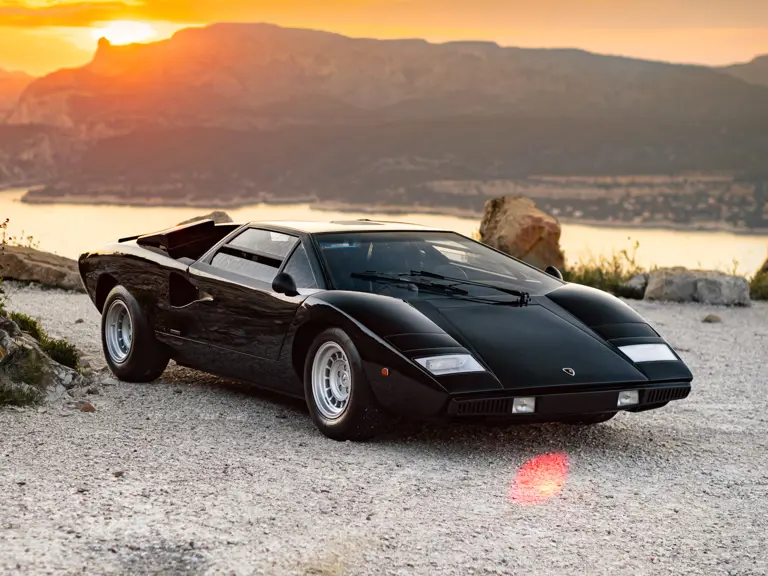
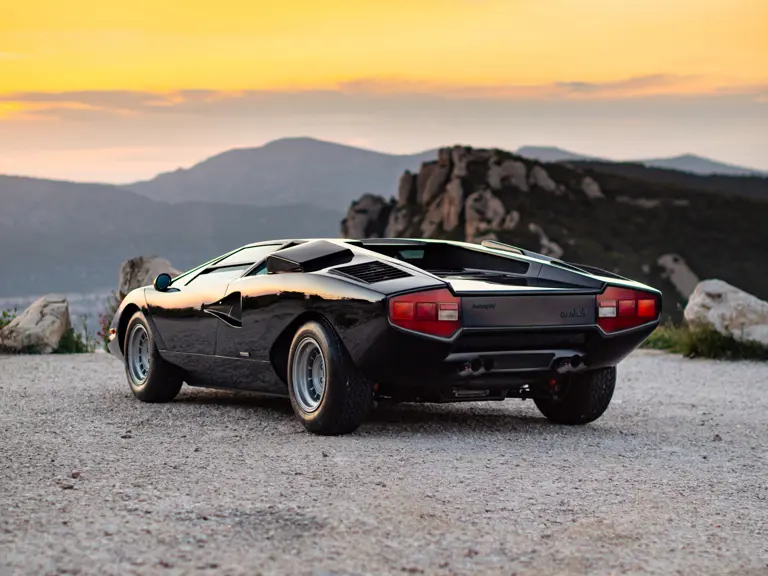
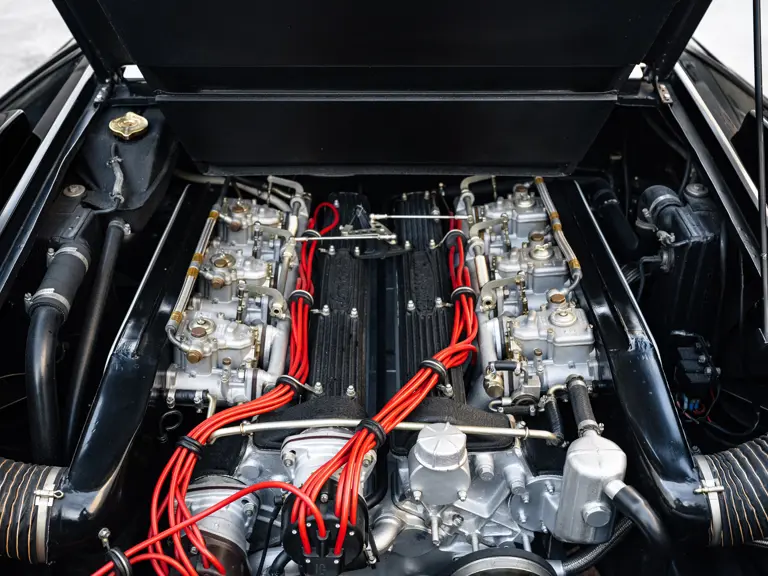
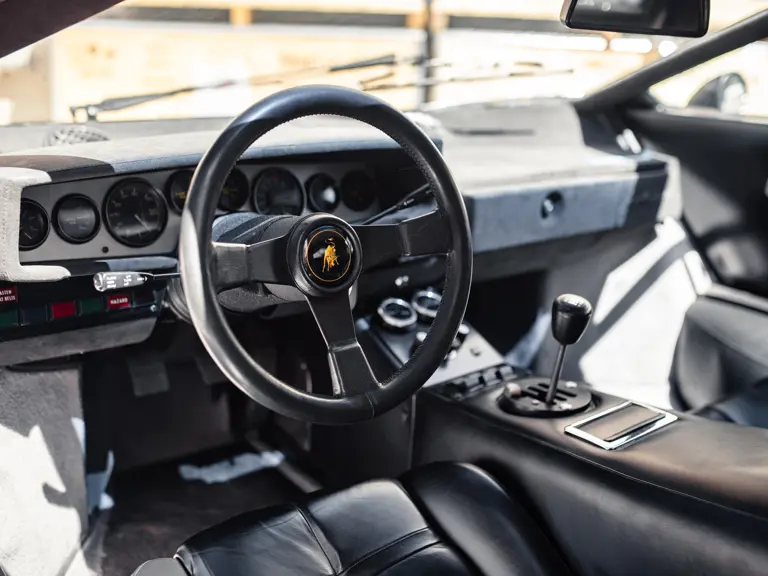
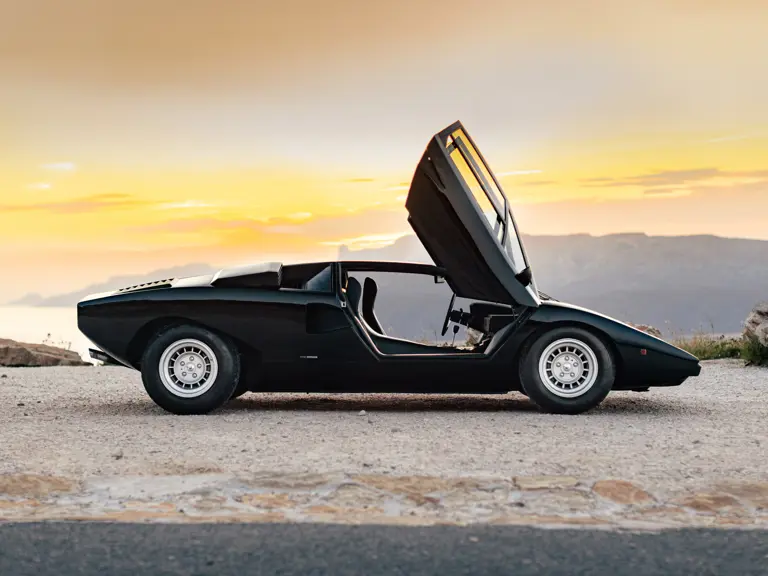
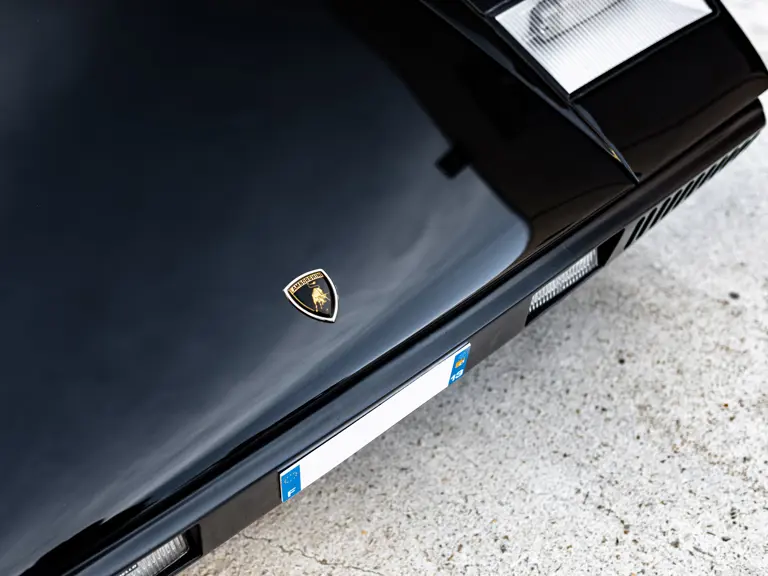
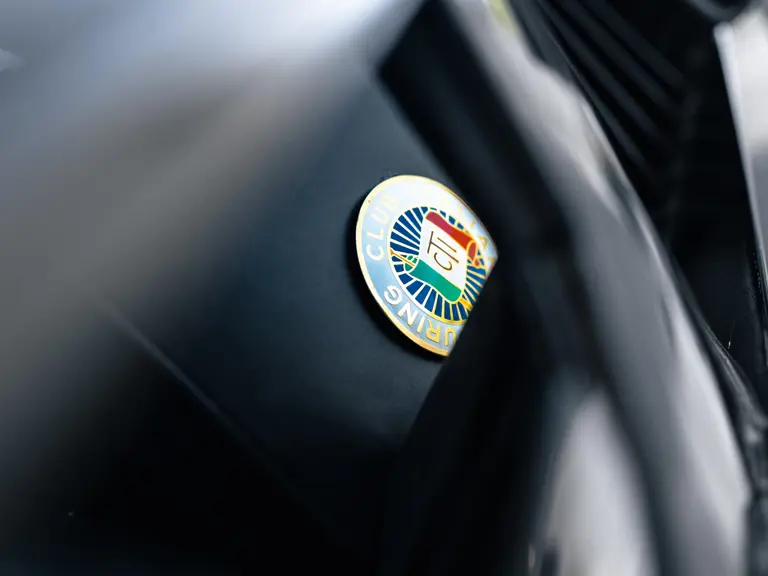

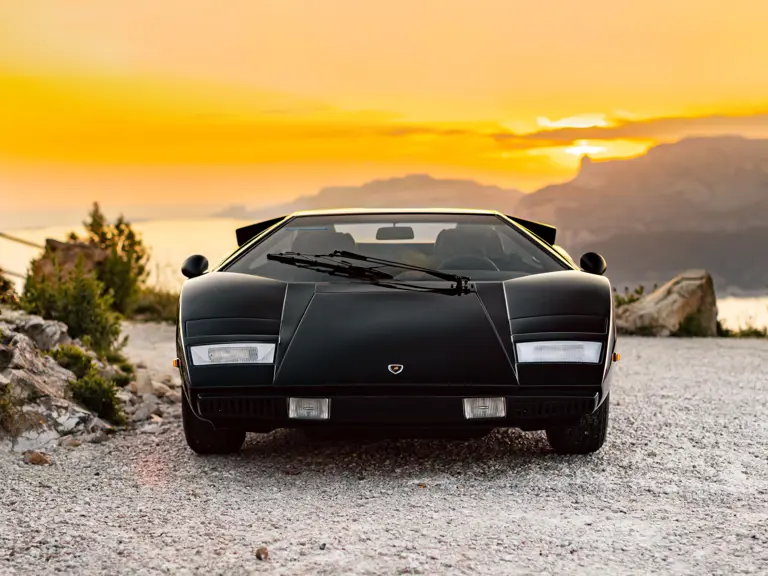
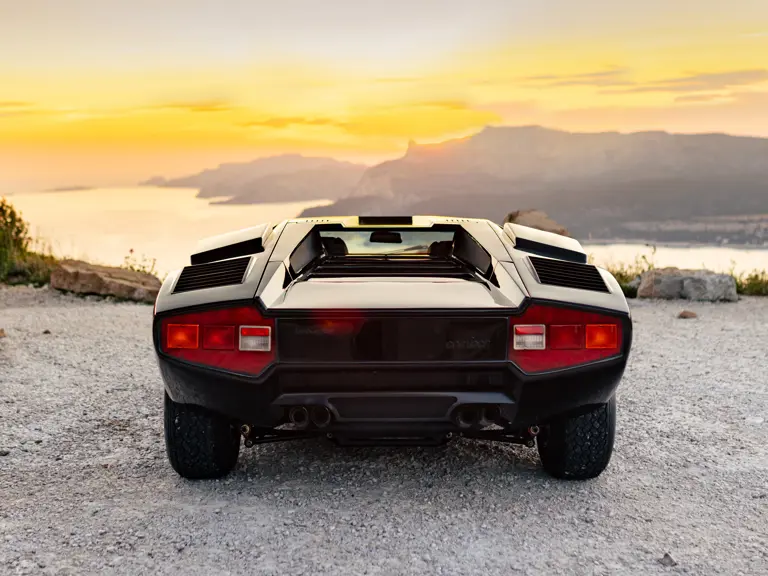
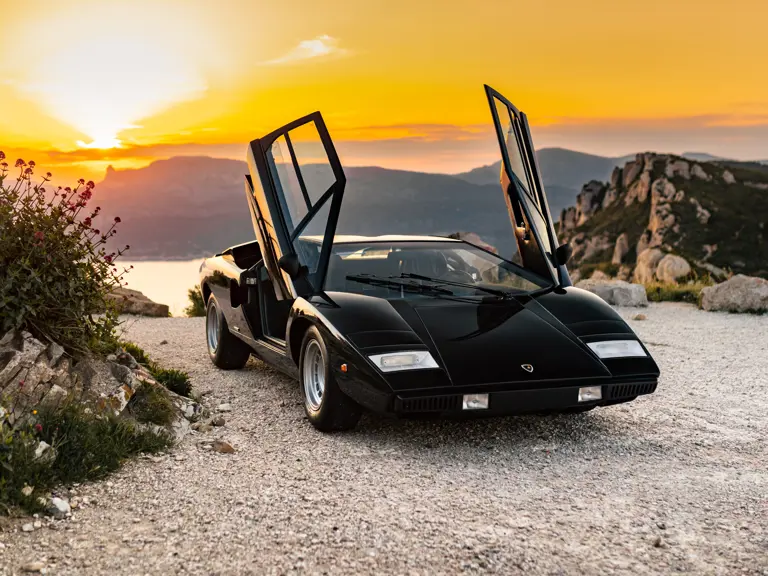
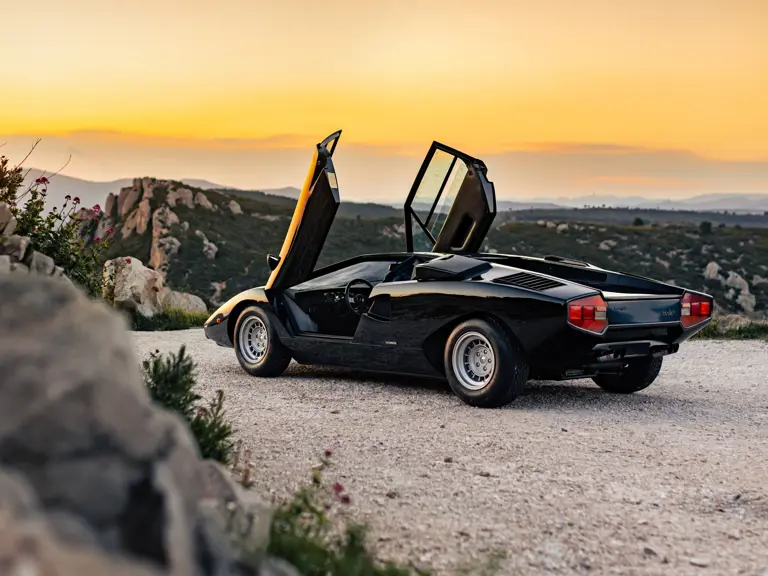


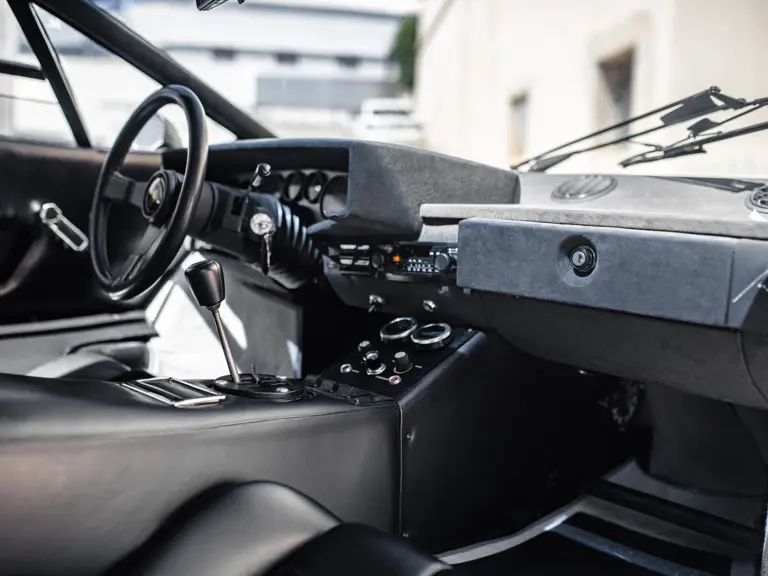

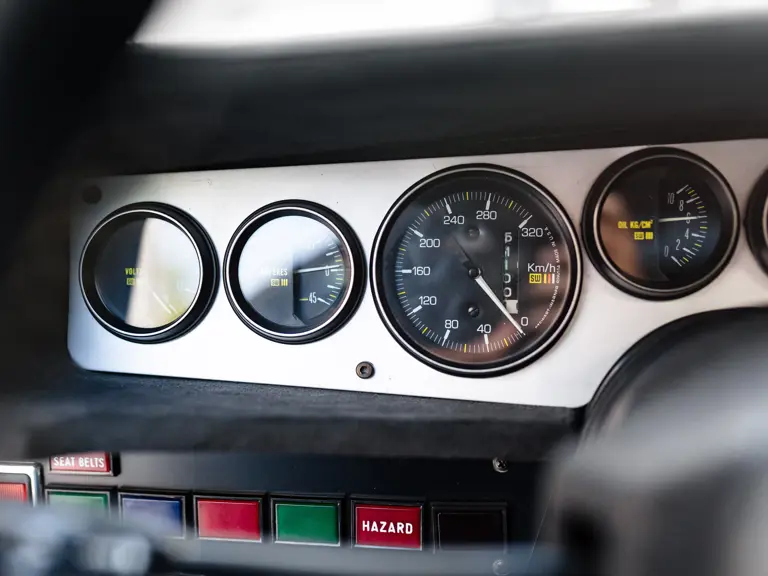
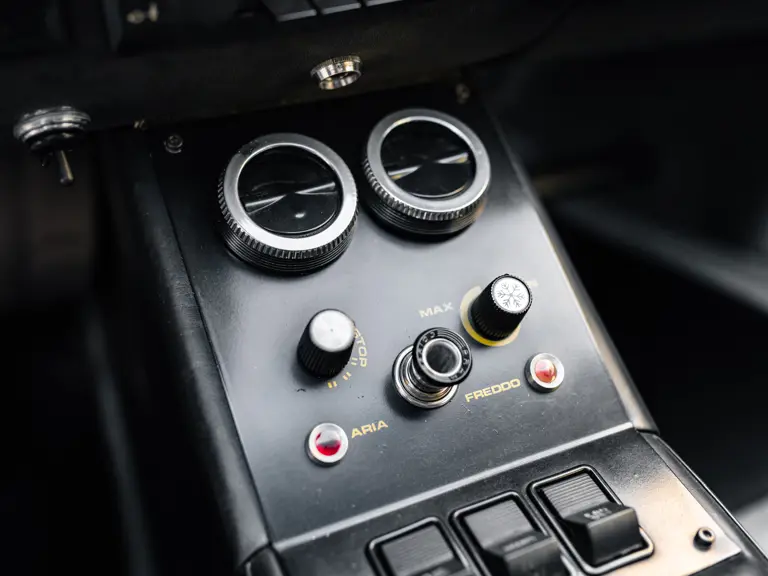

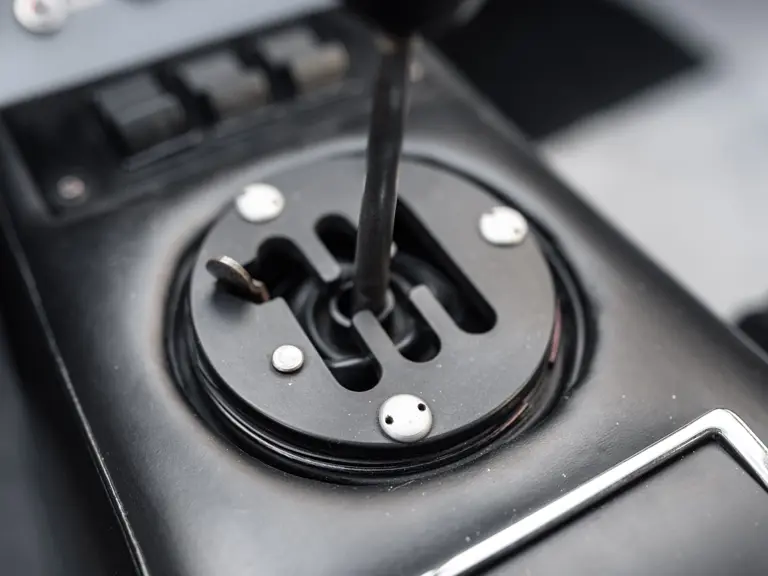
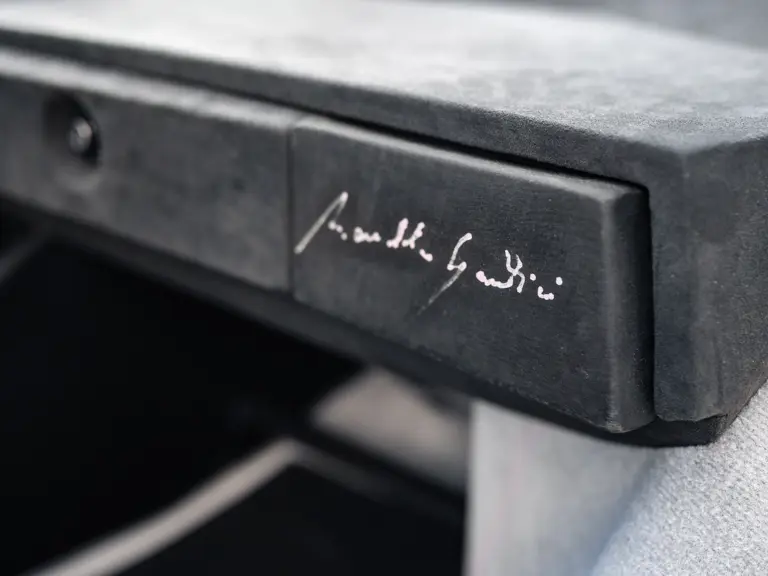
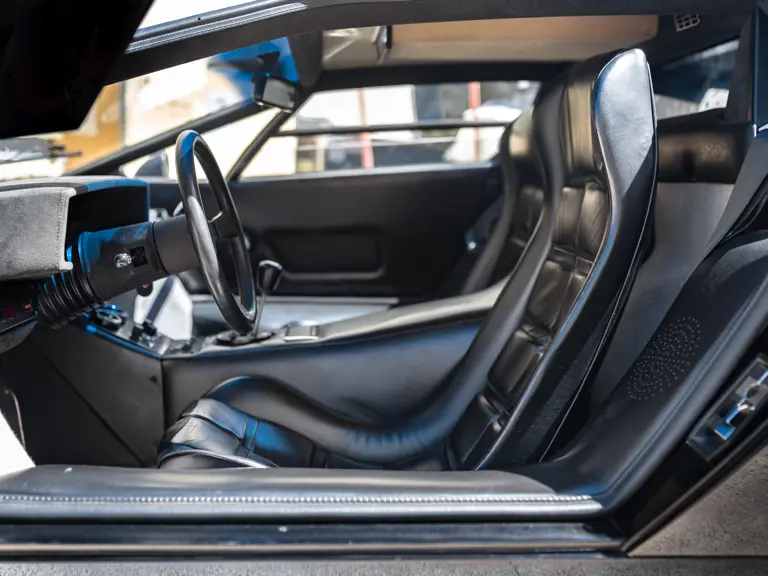
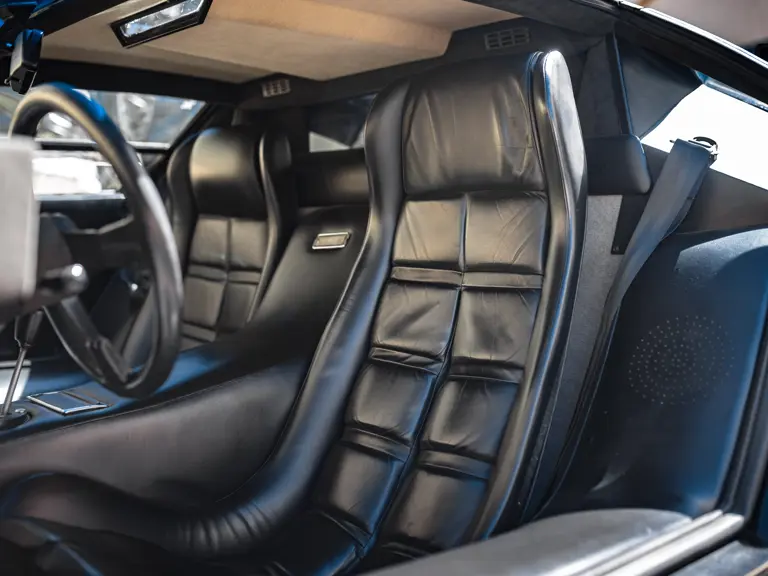


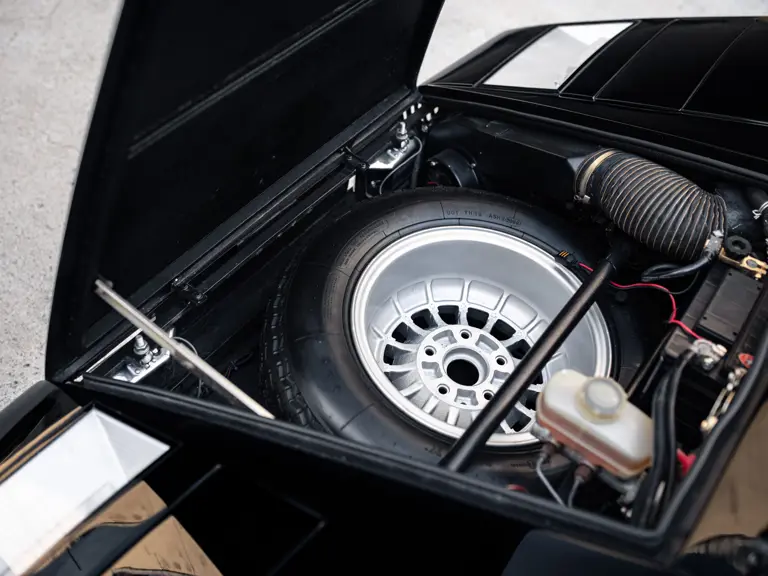
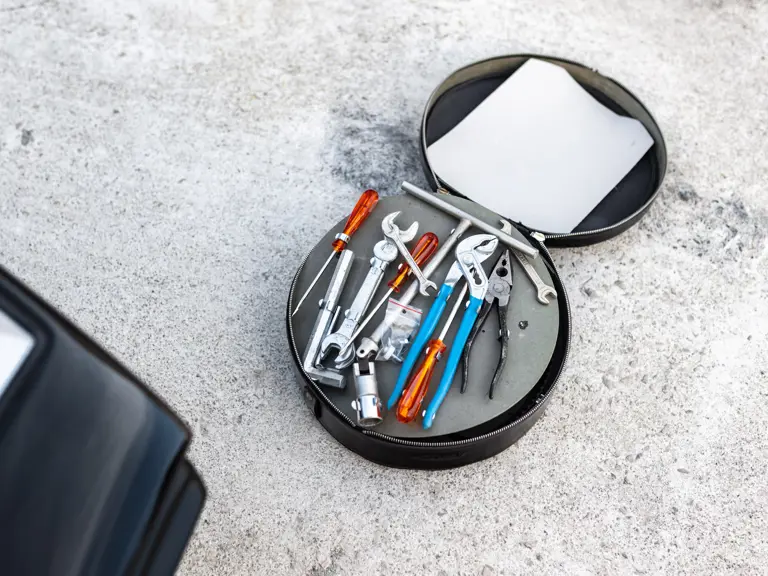
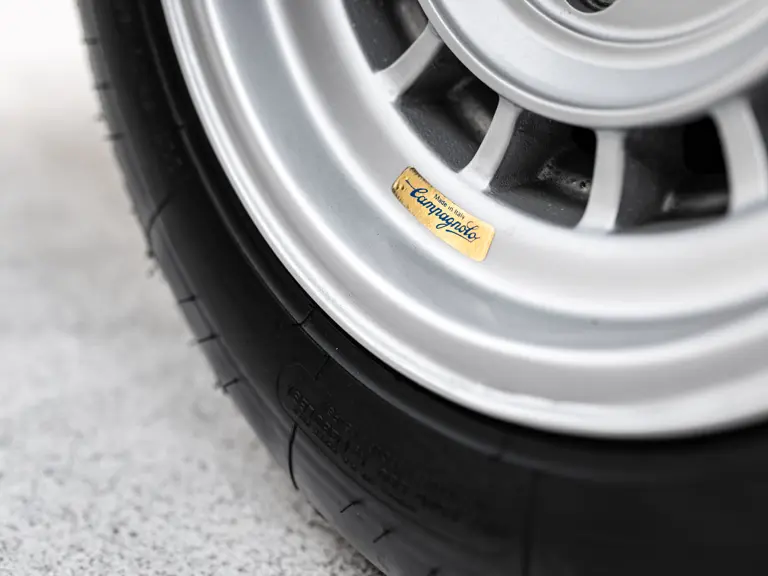

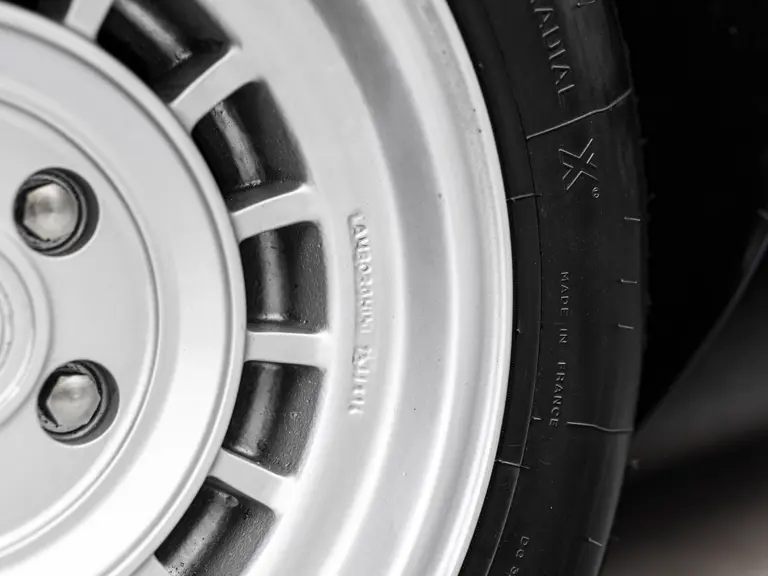
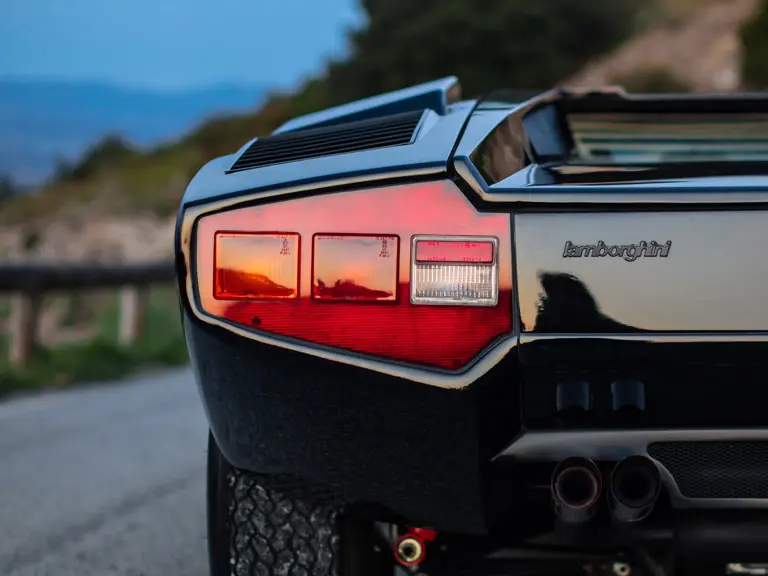

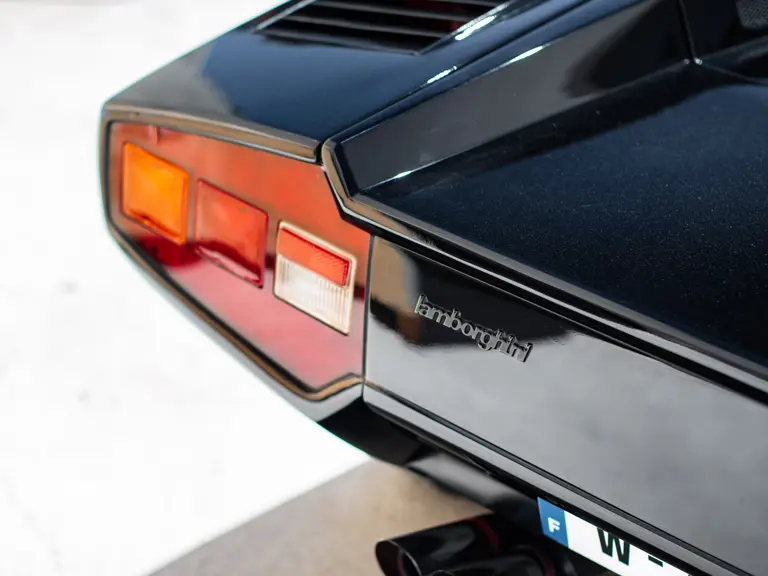
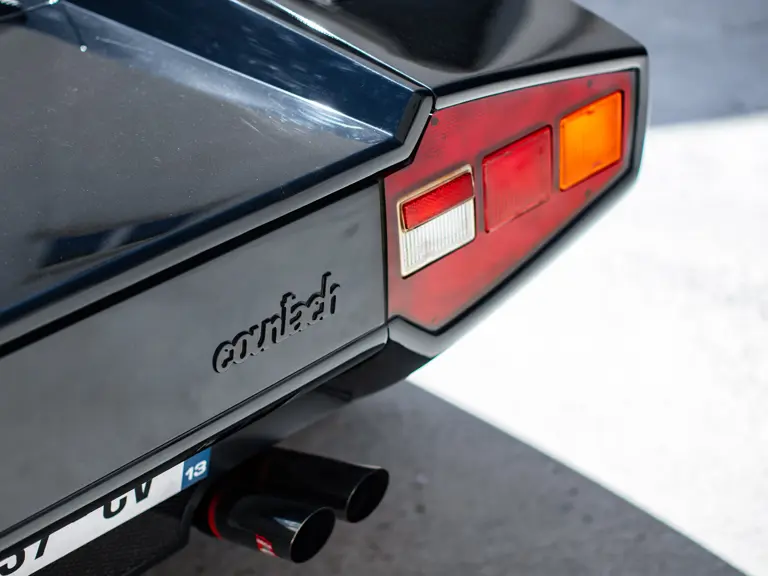




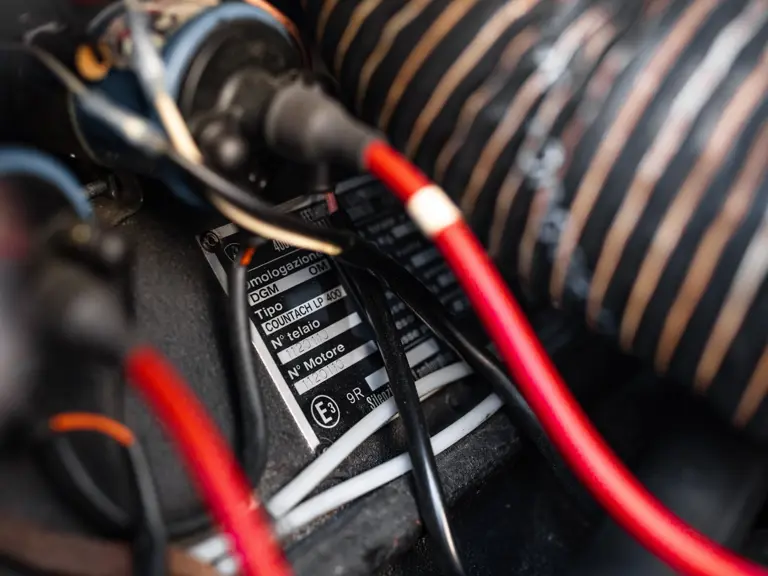
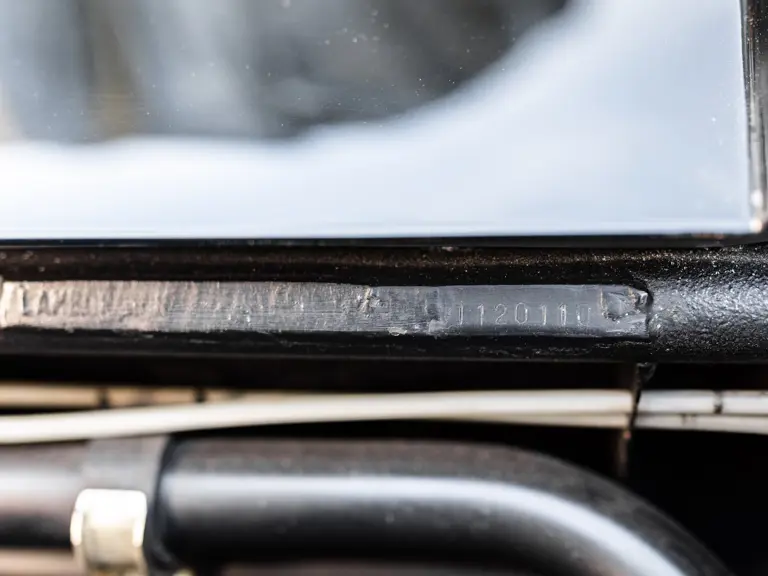
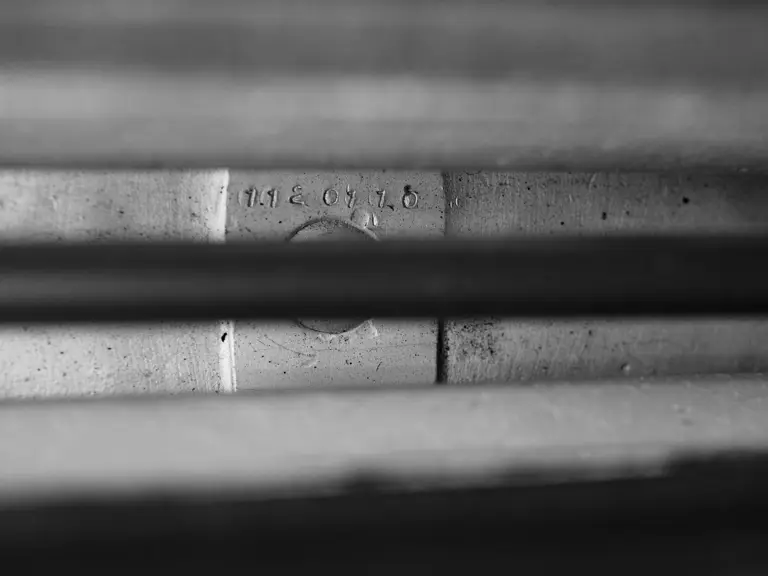
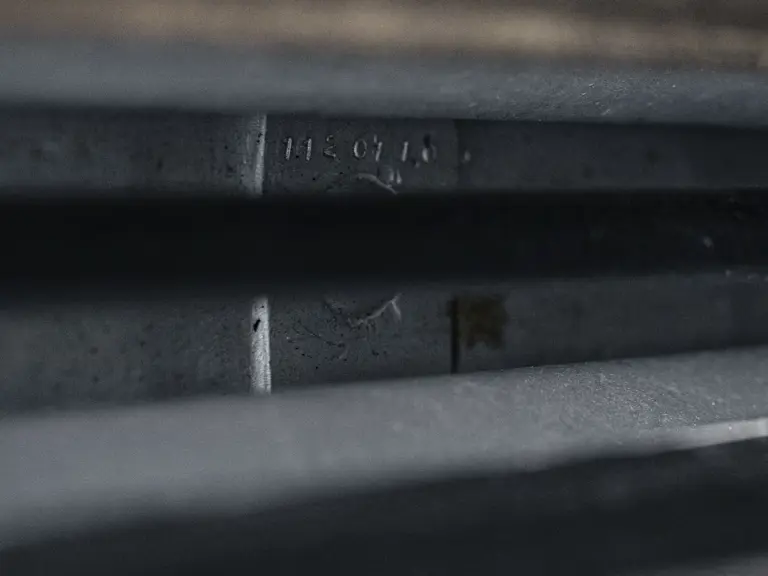
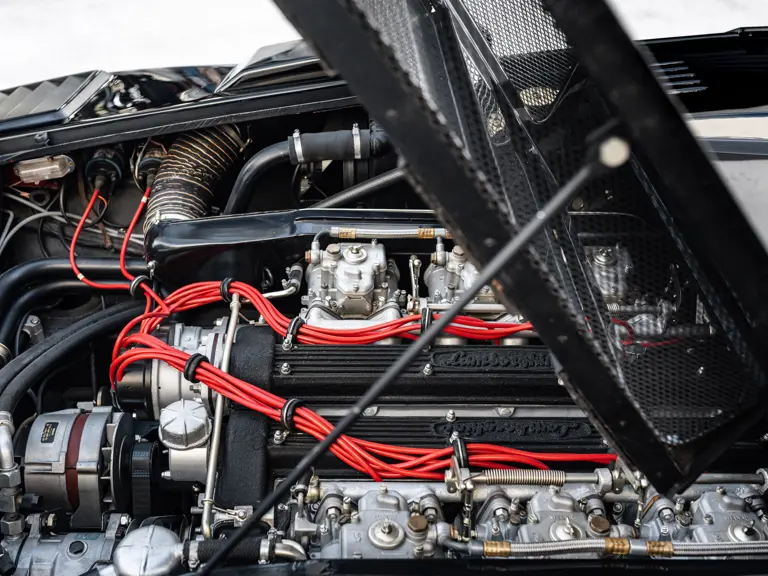

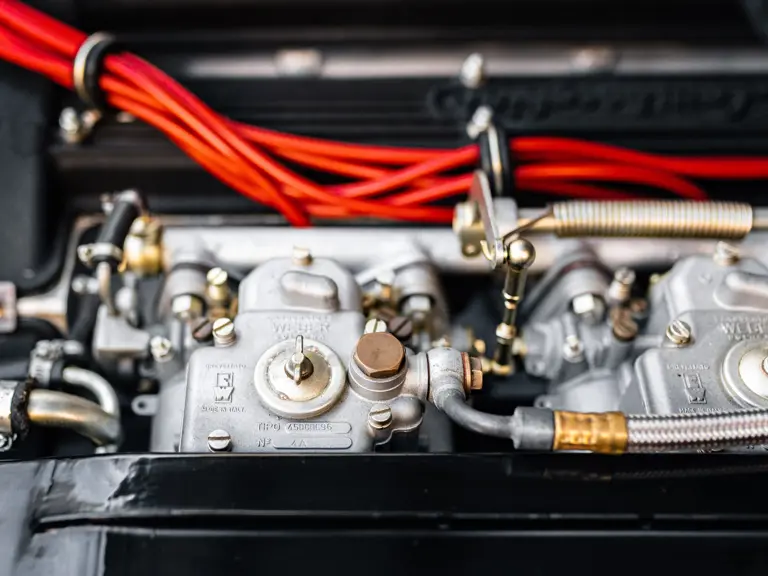
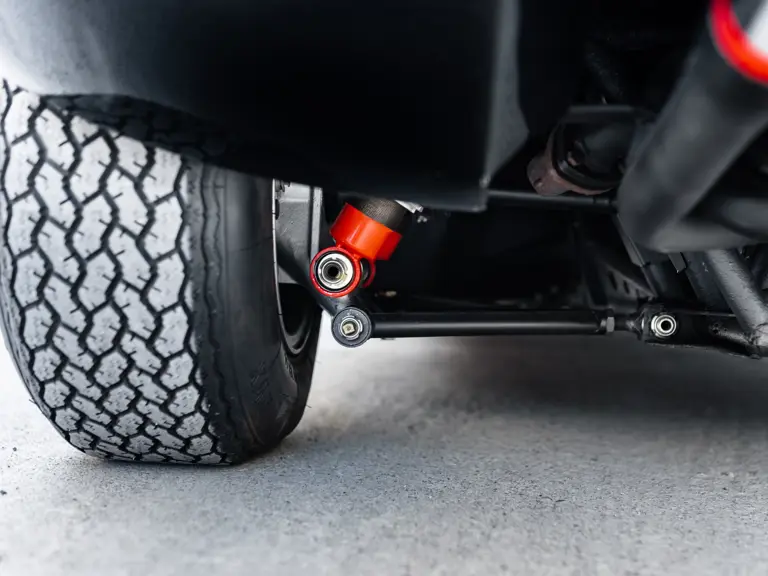
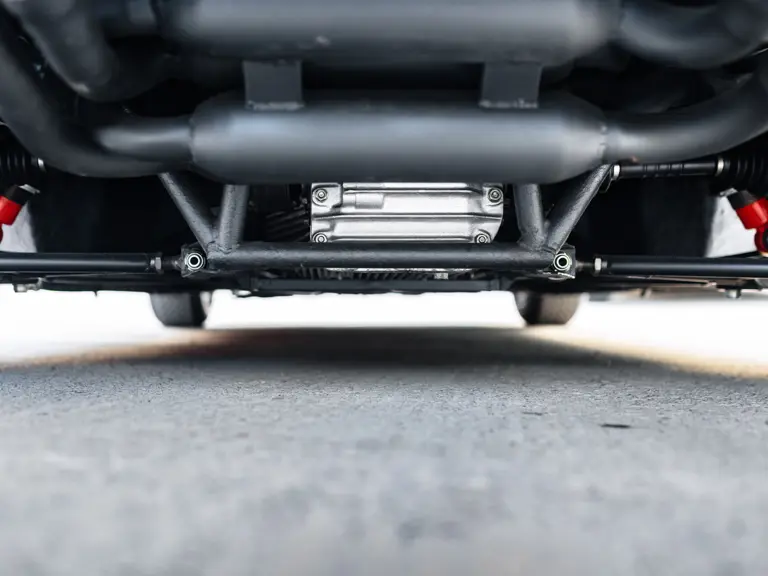
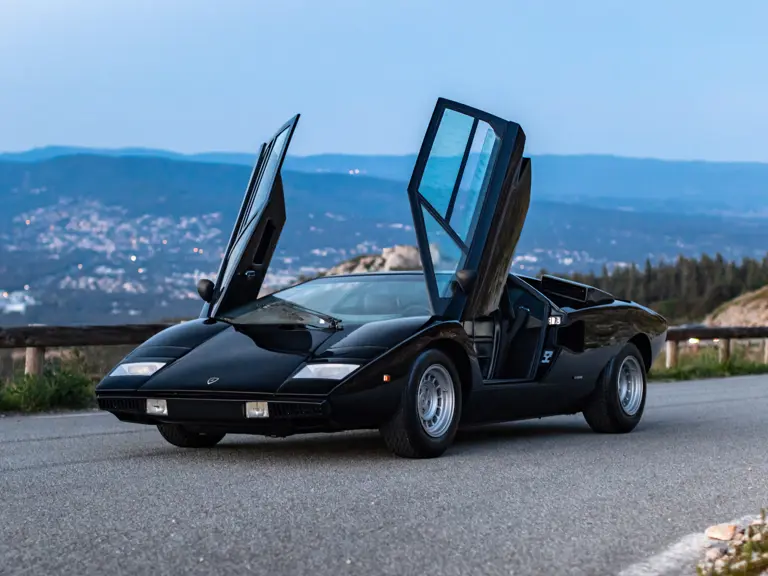
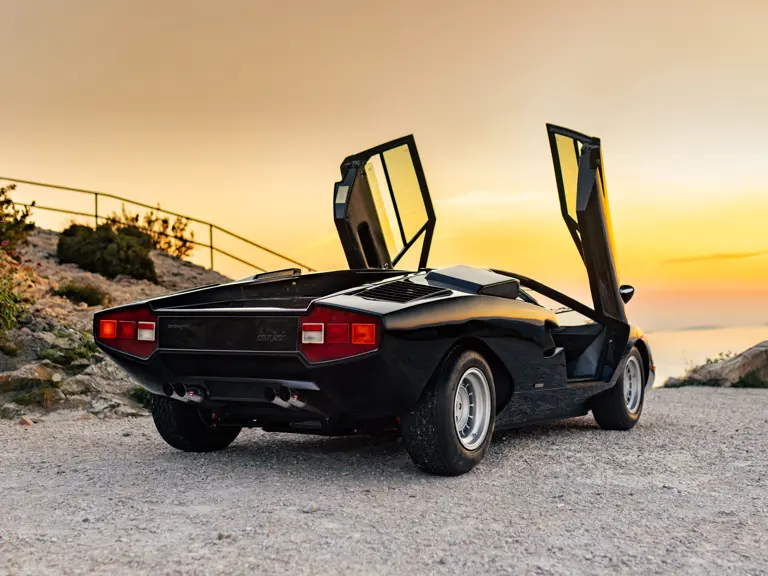

 | Le Castellet, France
| Le Castellet, France
